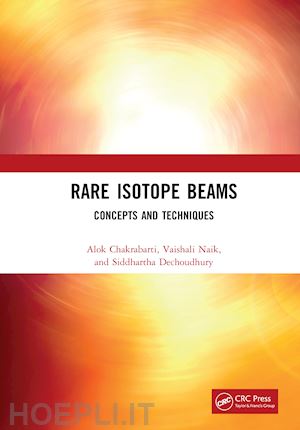Alok Chakrabarti, former Director at the Variable Energy Cyclotron Center (VECC), Kolkata, India, and former Raja Ramanna Fellow at VECC, is an accomplished Physicist and a leader who has pioneered the fields of Exotic Nuclei and Rare Isotope Beams (RIB) in India. Dr. Chakrabarti began his career in 1979 at the Bhabha Atomic Research Center (BARC), Mumbai, India, and earned his Ph.D. from the University of Calcutta, Kolkata, India. A recipient of the Indian Physical Society’s Young Physicist award, DAE’s Homi Bhabha Science and Technology Award and “Brojendranath Seal Smarak Samman,” he has published more than 100 papers in reputed peer-reviewed journals. Dr. Chakrabarti is regularly invited to deliver lectures at institutes of world repute and prestigious conferences. For his research, Dr. Chakrabarti built India’s first on-line isotope separator at VECC and developed many key techniques for experimental study of short-lived nuclei. His major contributions include the discovery of a new isomer, a new technique for beta-delayed proton spectroscopy and an innovative experimental study which proves that asymmetric splitting survives in fission, rather surprisingly, up to quite high excitations and that there is a signature of bi-modal fission. As a Project Director, Dr. Chakrabarti initiated and led the RIB project at VECC for which he successfully developed a number of advanced particle accelerators. This includes India’s first heavy ion Radio Frequency Quadrupole (RFQ) linac, a state-of-the-art machine that efficiently accelerates low-energy ion beams. Dr. Chakrabarti, along with Dr. Dechoudhury, suggested a novel concept on “Alternate Phase focusing in independently phased superconducting resonators,” which makes acceleration of particles much more efficient and allows acceleration of ions having different charge states. Dr. Chakrabarti has supervised more than a dozen Ph.D. students. He also serves as Referee for journals such as European Physics Journal A, Review of Scientific Instruments, Pramana, Nuclear Instruments and Methods and Ceramics International and serves on the Scientific Committees of major international conferences in the field of particle accelerators. Vaishali Naik is presently serving as Head of the RIB Facilities Group at VECC, Kolkata, India. A post-graduate in the Department of Physics, University of Pune, India, Dr. Naik graduated from the 33rd batch of training school at BARC, Mumbai, India. She joined VECC in 1991 and began her career as an experimental nuclear physicist. She later started working on particle accelerator development for the RIB program, where she played a leading role in the design and development of ECR ion sources and RFQ linacs and developed a gas-jet ECR technique that led to the first successful production of RIBs using the facility at VECC. A recipient of the DAE Scientific and Technical Excellence Award and Group Achievement Awards, Dr. Naik has published more than 30 papers in reputed peerreviewed journals. She is presently supervising several Ph.D. students as a Professor at the Homi Bhabha National Institute (HBNI) and is also the Project Leader for the superconducting electron linac at VECC that is being built in collaboration with TRIUMF, Canada. Siddhartha Dechoudhury joined the RIB Facilities Group at VECC, Kolkata, India, in 2001 as a Scientific Officer after completing his M.Sc. in Physics, followed by a one-year orientation course in the 44th batch of the Training School at BARC, Mumbai, India. Since then, he has been actively involved in the design and development of particle accelerators for the RIB project at VECC. His doctoral thesis, under supervision of Dr. Alok Chakrabarti, was on the development of a heavy ion rod type RFQ, which is the first of its kind in India. Presently he is involved in the development of a superconducting electron linac photo-fission driver, which is a joint collaboration between VECC and TRIUMF, Canada. Dr. Dechoudhury was conferred with a DAE Young Scientist Award in 2007 and a DAE Science and Technology Award in 2010. He has contributed to 30 publications in reputed peer-reviewed journals and about 40 papers in national and international particle accelerator conferences.











